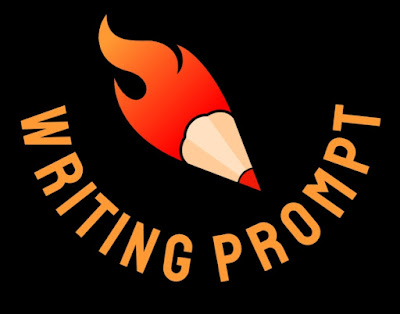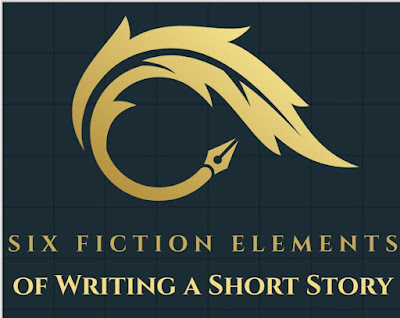Good Versus Good
by Randy Ingermanson
Advanced Fiction Writing
Many stories have as their main plot a conflict between “the good guys” and “the bad guys.”
You can think of any number of examples. The Harry Potter series. The Hunger Games series. Just about any mystery or suspense novel. And on and on.
“Good guys” against “bad
guys” makes a good story, no doubt about it. But there’s a way to make
it better without much effort. Throw in a bit of dissension among the
good guys.
So a secondary plot of the story is “good guys” against the other “good guys.”
This makes your story stronger for a couple of reasons:
- Now your “good guys” have an even tougher problem. They not only
have to defeat the “bad guys,” but they’ve first got to also settle the
differences among themselves.
- It introduces the possibility of a genuine moral dilemma in your
story. Because the competing groups of “good guys” may have different
values that drive them. And now you have to wrestle with which of those
competing values is most important.
Just as an example, consider the case of the Harry Potter series. This is definitely a “good guys” versus “bad guys” series.
The “bad guys” are Lord Voldemort and his gang of thugs who want to take over the world and oppress the Muggles.
The “good guys” are the decent witches and wizards who want to leave the Muggles alone.
In book 1 of the series,
our hero, Harry Potter, goes off to school at Hogwarts and begins to
learn about the magical world he belongs to.
Harry has no idea about
the massive battle looming with Voldemort and his minions. Instead, he’s
surrounded on all sides by different factions of “good guys.”
For starters, there are
four competing houses within the school. Three of these are “good
guys”—Harry’s own Gryffindor, along with Ravenclaw and Hufflepuff.
Harry quickly becomes best
friends with Ron Weasley, another first-year student, who’s a bit of a
goof-off. Ron and Harry find themselves at odds with another first-year,
Hermione Granger, who comes off as a stuck-up know-it-all. Eventually,
the three become friends, but it takes a troll to bring them together.
There are many cliques within Gryffindor. There are the cool kids, Fred and George Weasley and their friend Lee Jordan.
Then there is Neville Longbottom, nerdy and klutzy and generally a bit weird.
Ron and Fred and George
have an unbearably prissy older brother named Percy, who happens to be
the prefect of Gryffindor this year, and who makes life miserable for
his brothers.
Not to mention Ron
Weasley’s very cool older brothers, Bill and Charlie, who’ve already
graduated and left behind excellent reputations that Ron can’t hope to
match.
Then there’s Oliver Wood,
captain of the Quidditch team, who really gets upset when Harry gets
himself in trouble and can’t perform up to snuff on the Quidditch field.
And let’s not forget Hagrid, the affable half-giant who loves strange creatures and is secretly raising a baby dragon.
There are a lot of “good guys” here, all competing in different ways. They don’t mean to be making the battle againt the “bad guys” harder.
But that’s exactly what they’re doing.
Near the end of the story,
Harry and Hermione sneak out one night to help Hagrid get rid of a baby
dragon that’s getting much too big to hide any longer. They succeed in
getting the dragon safely rehomed—but then get caught before they can
sneak back in to Gryffindor. And caught with them is the bumbling
Neville, who sneaked out to try to find them and warn them to get back
where they belong. This gets them detention and causes Gryffindor to
lose 150 points.
As a result, Harry and
Hermione feel the rage of the entire Gryffindor student body. They’re
instant pariahs and the whole house treats them with contempt for weeks.
As final exams loom, Harry
and Ron and Hermione learn that Lord Voldemort is about to do something
terrible. They’ve got to stop him, so they decide to sneak out again
late at night.
But first, they’ve got to get past Neville Longbottom, who insists that he’ll fight them before he lets them break the rules yet again.
All of this conflict is
“good guys” against “other good guys.” And it makes the story stronger.
It makes the battle against the “bad guys” that much harder.
After the dust has
settled, the school headmaster, Albus Dumbledore awards points to Harry,
Ron, and Hermione, for their courage and wits in battling Voldemort.
And he also awards points
to Neville Longbottom. Why? Neville didn’t do anything to fight
Voldemort. But as Dumbledore points out, it’s just as hard to stand up
to your friends as your enemies. (In my own experience, it’s sometimes
harder to stand up to your friends. Peer pressure and all that.) It’s
the first courageous thing Neville has ever done, but it won’t be the
last. In standing up to his friends, Neville has become a better person.
So have Harry, Ron, and Hermione.
The main story in the
Harry Potter series is consistently the “good guys” against the “bad
guys.” That’s the way it should be in this series. But the story is made
so much better by the many, many ways in which the “good guys” are
infighting with the other “good guys.”
Homework
- Is your story a “good guys” versus “bad guys” kind of story?
- How many conflicts do you have between “good guys” and other “good guys?”
- Can you add more?
- Will that make it a better story?
About The Author
Randy Ingermanson
is a theoretical physicist and the award-winning author of six novels.
He has taught at numerous writing conferences over the years and
publishes the free monthly Advanced Fiction Writing E-zine.







